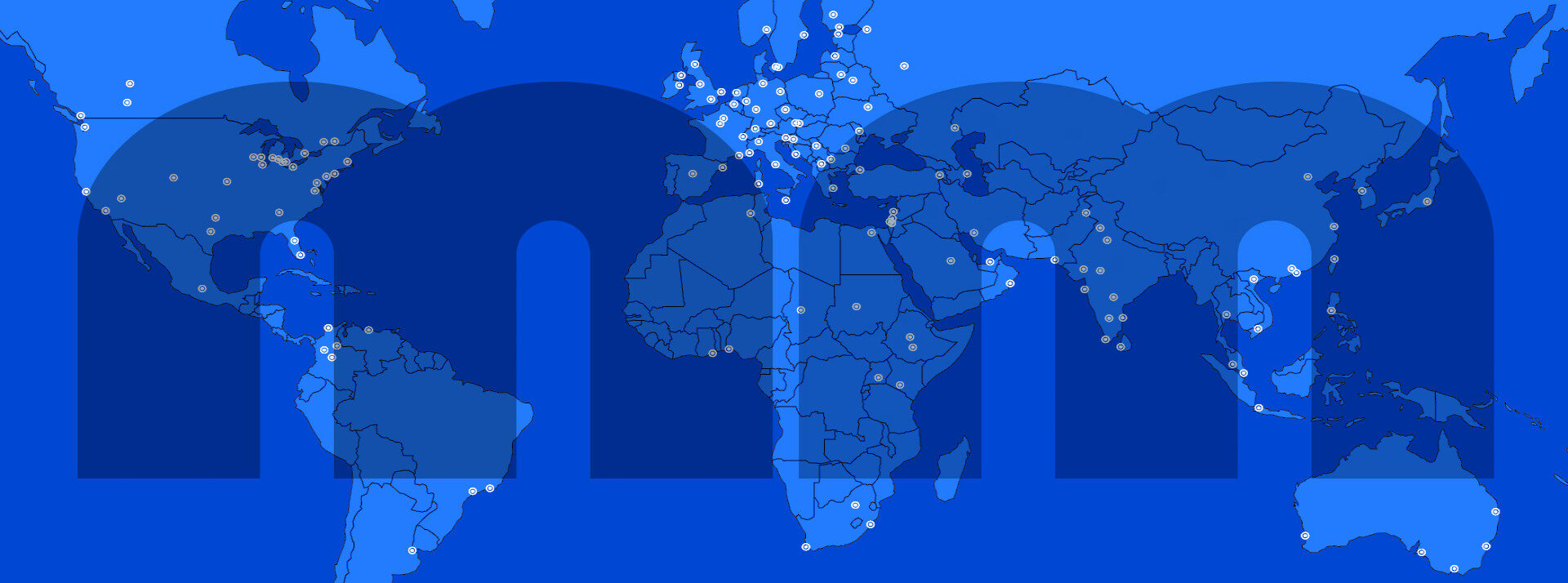MoMo London 28th Jan. Event Round Up – Mobile Games – Part 1
Posted on: February 6, 2012 – Filed under: London
 Not just one round-up but two this time! We’re very fortunate to have two complementary views of last Monday’s event.
Not just one round-up but two this time! We’re very fortunate to have two complementary views of last Monday’s event.
The first is from volunteer Valentina Ciolino that’s @MissFog. Thanks for this most comprehensive-write up, Valentina – what’s the story with the hats? Indeed!
With many thanks, once again, to our event partners, ICTKTN.
 |
| Oscar Clark |
Having worked invideo games and mobile, I could not miss the first London MobileMonday of 2012. “Mobile Games” was the hot topic of the night,discussed by a great panel of professionals and chaired by OscarClark of Papaya Mobile. Notthat one would want to miss any of these industry gatherings, but,for me, it was also the first time on the volunteer side. In fact,they even gave me the chance to blog about the event, so here I am.
While on the tube to goto the event, I was thinking about the topic. I personally feel thatvideo games and mobile industry are converging towards somethingdifferent, and mobile games development is driving the innovation.The new mobile and tablet platform allowed games to change, thanksmainly to three new features: touch screens, connectivity andportability. All the portable game consoles we used before the riseof the app stores lacked at least one of the three, not to speakabout the powerful graphic of the new mobile screens. We now havetap/swipe/multitouch games, games paid by ads, a new type of socialgames, 5 minutes games (to repeat every hour). Before the eventstarted, I wondered what other changes the panelists would forecastfor 2012. The answer at the end of this post!
But back to the evening:Oscar, who was one of the two people in the room wearing a hat(pictured), made a good job moderating the debate and bringing on thetable some alternative points of view of his own.
Credit is due to Oscar and to Mobile Monday London for bringing four panelists withdifferent background and experience, always a good way to guaranteea nice and lively discussion.
Here their names and titles:
IanBaverstock (Tenshi Ventures),
StruanRobertson (Product Director, NaturalMotion Games),
GarethEdmonson (CEO, Thumbstar Games),
GeorginaMackenzie (CEO at Toytek). They are famous enough for me not tospeak about them, but you can always click on the links to know more.
The icebreaker questionregarded the current situation of the mobile games industry and itslatest evolutions. Some 2011 changes in the market were felt as veryimportant: first of all the rise of the Android platform and market,which grew and gained strength in terms of monetization. Android canbe seen as a difficult market as it’s full of
freemiumproducts and shows high piracy and discoverability problems, but itoffers many opportunities in terms of potential innovation. Thehardware presents high fragmentation but the majority of the Androiddevices are powerful enough – in memory & chips – to allow forcreativity. And the fragmentation can be addressed; in fact, Garethmentioned that there are 6 versions of Android OS but 4 of Apple iOS.On the bad side, the gap it’s probably widening as Struan noted,and this could higher the entry barrier for developers. Moreover,even if sales on Android are big, the Apple App store is morepredictable, continued Struan, and many developers spend much moneyon it.
Another 2011 hit was thetablet market, with the iPad leading the way. It is a “spectacularplatform” as Ian said and features
atype of games different from mobile, 3D games with great graphicand new additions to the user interface. It is also easier, Iannoticed, to get visibility on a smaller market such as the iPad AppStore than on the larger ones, which is definitely an importantadvantage for games developers.
 |
| The Copy Cats |
The third, less positivetrend of 2011 was the increase of the number of “copycat” gameson the market. Apparently, some big and medium companies (in order toavoid the risks of innovation, and the costs of experimenting withnew channels, noted Georgina), prefer to reproduce famous existinggames, replicating the gameplay. One of the possible solutions tothis problem is to use the cloud to make social-mobile games for alarge market, which is something that big publishers are alreadybetting on. “Social mobile is going to explode”, said Gareth,“thanks to the cloud”.
Socification of games wasthe topic of one of the question from the public (by
@torgo)which started a nice debate on if social games today are “reallysocial” or not. People playing asynchronously on the sameserver brings a lot of revenues, said Oscar, and developers spend alot of time to get people to complete quests, but it can’t becompared with the experience of multiplayer games. On a slightlydifferent note, Ian noted that only few games, and mainly onconsoles, are well-tailored for the multiplayer mode. The verdict onsocificiation was, in the end, that it’s not bad as long as it addsto the game experience and don’t steal the fun out of the gameplayto increase sales or get new users.
The main discussionsrevolved around few topics: business models (freemium vs premium,ads), platforms and markets (emerging markets, operators, WindowsPhone) and, of course, customers. I am really happy to report on thislast theme because I think the panelists just put in words mythought: there are many kinds of gamers, gamers change all the time.As Georgina mentioned, the
advergamingplayers, for example, “don’t consider themselves gamers at all”,but enjoy the experience anyway. Similarly, the console gamers maynot be scared to move to TV games as long as the controllers stay thesame, since, as Ian stated “console games are basically TV games”.When touchscreen emerged, the lack of buttons was seen as a problemfor gameplay, but now there’s a large audience who won’t playwith controller as they are too different and require a differentapproach. There are some psychological differences too, added Oscar,and different inputs works better for different games – and gamers.
Same story for businessmodels: free games with ads appeal to some gamers, free games within-app purchases appeal to others. The freemium model has beenaffected by a bad reputation as the UK industry is still not fullyconvinced it works, but maybe the developers just have to startadjusting the learning curve for their games to make them sell more.The “user training” tricks proved to be very effective for allthe applications that use game mechanisms to engage consumers (theso-called gamification of apps). Struan made the example of
LinkedInapps where daily simple notifications ask you to recommend yourcolleagues, add a picture or complete your profile, thus explaininghow to use the app itself. Other tricks used on gamified apps are thepublic leader boards and the awarding of badges. Oscar quoted a veryeffective explanation for gamification, which is how you get peopleto go back to the app, versus game design, which is the way youcreate fun. Not necessarily marketing people can make good design oreven level design, and not all mobile developers know how to learnfrom games.
One of my
favouritequestions of the night was the following one: Is this a good momentto be a game development company? There are many opportunities,especially on mobile and tablets, but also a lot of competition. Thebarrier to enter the market is low, but the effort requested to makegood games has increased. There are new ways to work across formats(web, mobile, consoles, etc), and this is driving a change in contentand gameplay, but also new ways to market products, which is anopportunity that requires new people with marketing knowledge. Itwould have been good to ask to some of the experts at
TIGA,who were between the audience, what’s their take on it, if it’strue, as Georgina reported, that of 147 development companies set inUK between 2008 and 2010, 131 shut down before the end of thatperiod. How many of them were mobile developers, I wonder? And what’sthe number of start-ups which develop games but have other digitalproducts too (apps, or websites, or design, for example)?
The panel discussed a lotof other topics, and answered some 999 questions from the passionateaudience, but I thought I’d better condense their words into a listof 8 kick-ass suggestions for UK mobile game developers:
-
Research about your target market and decide the business model before stating to design your game: if you go web, you can have a “try before you buy” approach and make the first level teasing like a movie trailer or, if you are opting for the freemium approach, the gameplay must be compelling enough to make your audience play often and pay for in-app. That’s what Natural Motion did before releasing “My Horse”, and that’s a point on which all the panelists agree, the marketing must be integrated with the game design.
-
Choose your
coding language and engines with care: Objective C can limit your chance to port the game to other platforms in the future, warned Georgina, who suggested C++ for the core features of any game so they can be transferred, but only if you’re using the same core mechanics. The rest of the code could then be more quickly ported from one program to others. When someone from the audience asked if the panel would suggest developing games separately for each platform, the answer was unanimous: you can develop you own engines, but don’t underestimate the value of cross-platform engines such as
Unity,
Marmalade and so on.
-
Don’t limit your business to only one market; try to plan your production so to include porting the game to other platforms and stores. Having one product on one app store is not going to be enough for funders to notice you, as Ian hinted, and, as in Struan’s experience, being an established developer on one app store also helps to get more users thanks to “internal” cross-promotion. As Gareth said “there’s an opportunity in throwing at different channels out of the app stores” such as operator’s markets, if you have good content, or, better, a network of content. But there’s a catch: be specific about the channel you address: don’t go for the common lower denominator, try to exploit all the hardware features.
-
Make a clever use of analytics: pass the knowledge from the commercial to the production team and back, change your product price and game design according to the feedback from your customers. Never before the game industry has had such an amount of data, comments and feedback from the users, let all the people in your company understand the information you get.
-
Have a roadmap for main changes, but be able to respond to the market. In the console world sales data were locked due to licensing and access issues, and both prices, design and were basically fixed. Now, instead, you can change your game’s design depending on the rise or fall in sales, so have an expert to look at your data and let your product evolve with them.
-
Beware! When porting your product to the iPad, remember that it is used in a much different way and for longer game sessions compared with mobiles. Ian was the first to point that out: people use their mobiles to play on the go, shorter and simpler games, but if they can choose, they opt for the iPad as console and buy optimised games. Porting from iPhone to the iOS tablet is one of the simplest ways to differentiate, he said, and Georgina added that her company produces games with high quality graphic exactly for that reason. That applies to all the platforms.
-
Don’t save on Q&A, or better, set a budget for
proper testing. Ian pointed clearly out that many mobile developers unfortunately have no idea how much important that is for every release. I would add: test features that will make your product stand out from the crowd – original soundtrack, great graphic,
vibration effects, multiplayer etc. Don’t be scared to be original and innovative, as long as your products are technically impeccable and fun.
-
Apply for
grants and funding.
Abertay University, TIGA and
ICT KTN periodically offer the chance to get some money for your ideas and support the applicants during the process with mentoring sessions. Someone from the audience even said he had won one of the challenges and got a fair amount for a mobile game! You’ve just
missed the deadline for the contest to produce a game integrated with the SDK and marketed through the networks of
Antix Labs and
Turbulenz, so try not to miss the next one.
And here we are with thepanel’s trends for the future of mobile games. First of all:social-mobile is going to explode, according to Gareth, thanks to thecloud, and big publisher are going to put big money on innovation andgame content for the genre. But there are some cool features that candrive innovations, such as voice controls, added Struan, or AugmentedReality, said Georgina. Oscar bets on location games, if they movetheir focus from tech to the experience. What did Ian forecast for2012? The boom of more expensive and higher quality mobile games.It’s time, I say.
Finally, I’d like to goback to the initial note about the chairman who was wearing a hat andadd that the other person wearing one at the event was the hosthimself,
Jo Rabin. May I assume there’s a fashion trend? Youropinion on this important theme will be very welcome.
That is probably the first time I have been accused of being at the forefront of a fashion trend 🙂 – Jo





